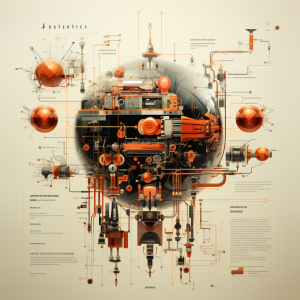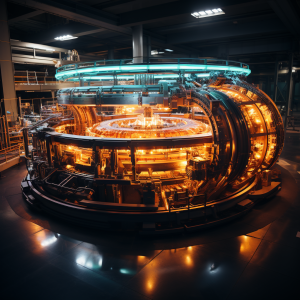
What are the key concepts of nuclear physics and radioactivity?
Nuclear physics and radioactivity are two interconnected fields that have revolutionized our understanding of the world and have numerous practical applications. Nuclear physics is the study of the properties, behavior, and interactions of atomic nuclei and their constituents, while radioactivity is the phenomenon by which an unstable atomic nucleus emits particles or photons, thereby transforming into a more stable nucleus.
The key concepts of nuclear physics can be broadly classified into four categories: nuclear structure, nuclear reactions, radioactivity, and nuclear energy.
Nuclear structure
The nucleus is the central part of an atom, and it consists of protons and neutrons. These particles are held together by the strong nuclear force. The number of protons in the nucleus determines the atomic number of the element, while the total number of nucleons (protons and neutrons) determines the mass number. Understanding the nuclear structure is important because it helps us understand how atoms interact with each other. This knowledge has led to the development of technologies such as nuclear magnetic resonance imaging (MRI) and positron emission tomography (PET), which are used to diagnose and treat various medical conditions.
Nuclear reactions
Nuclear reactions involve changes in the nucleus, such as fusion (combining two nuclei) or fission (splitting a nucleus). Nuclear reactions release large amounts of energy, which can be harnessed to produce electricity. Nuclear reactions are the basis of nuclear power plants, which generate electricity by using the heat produced by nuclear reactions. The energy released during nuclear reactions is also used in space exploration, where it powers spacecraft and rovers.
Radioactivity
Radioactivity is the spontaneous decay of an unstable nucleus, which emits particles or photons. There are three main types of radiation: alpha particles (consisting of two protons and two neutrons), beta particles (electrons or positrons), and gamma rays (high-energy photons). Radioactivity has many practical applications, such as in cancer treatment and radioactive dating. Radiation therapy is used to kill cancer cells, while radioactive dating is used to determine the age of ancient artifacts and geological formations.
Nuclear energy
Nuclear energy is the energy released during nuclear reactions, such as those that occur in nuclear power plants. Nuclear energy is a highly concentrated form of energy, and one gram of uranium can produce as much energy as three tons of coal. However, there are concerns about the safety and security of nuclear power. Nuclear energy has the potential to provide a significant amount of the world’s energy needs, but it is important to ensure that nuclear power plants are designed and operated safely.
In conclusion, the study of nuclear physics and radioactivity has led to many important discoveries and has numerous practical applications. The key concepts of nuclear physics include nuclear structure, nuclear reactions, radioactivity, and nuclear energy. These concepts have led to the development of various technologies that have transformed medicine, energy production, space exploration, and many other fields. Understanding these concepts is essential for anyone interested in these fields.




